Intrigued by the premise of the 2014 exhibition Pasticcio at the Flemish Architecture Institute, a couple wanting to replace their house on Werfstraat in Brussels called the exhibition designers, Bovenbouw. The show had brought together a group of European architects, including that Belgian office, who were reinventing building traditions that had emerged before the Modern movement. The clients, who run a telecommunications company, did not want a glimmering glass-and-steel building, nor did they want something dull and retro. “They were fascinated by the idea that buildings could be contemporary without all the Modernist tropes,” says principal Dirk Somers.
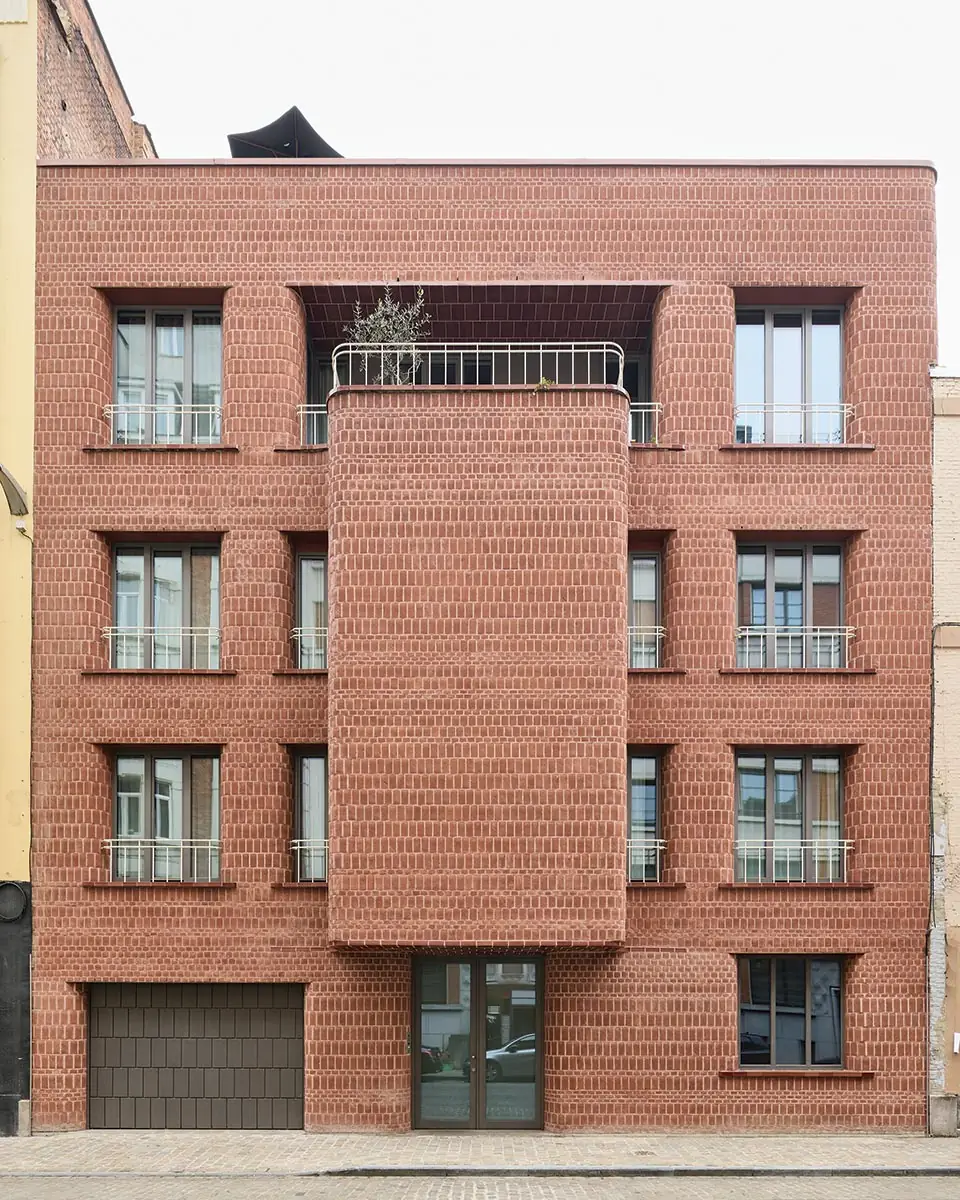
Fabric-like brickwork adorns the street-facing facade. Photo © David De Bruijn, click to enlarge.
To make way for the residence, Bovenbouw demolished the client’s existing house, a converted two-story workshop that no longer provided enough space for their family and didn’t in any architectural sense address the scale of the street, with its heterogeneous mix of office buildings, warehouses, apartment buildings, and an art gallery. The new four-story house features a symmetrical rhythm of recessed windows that is interrupted by a blank protrusion, hanging over the entrance, similar in fashion to Palladio’s Casa Cogollo in Vicenza, Italy, the main historical influence. This unexpected gesture not only gives the shallow building some depth (the plot is 24 feet deep at its shallowest), but it also creates space on two floors for curved lateral windows with oblique views toward a tree-lined boulevard, and, above it, supports a generous south-facing balcony overlooking the street.
This bold move both demands and accentuates ingenious, fabric-like brickwork. The facade, 50 feet high from the ground to cornice, is richly textured with courses of conventional bricks, cut to five different sizes. Brick stretchers have been laid above and below the windows, while headers run in ribbons between floors. More extreme are the bricks stood up as “sailors,” exposing their broad undersides. This variety allowed the builders to seamlessly contour the outermost wythe (there is an air cavity behind it) to create rounded corners and curved window reveals. Such plasticity is redolent of the many stone Art Nouveau buildings in Brussels.
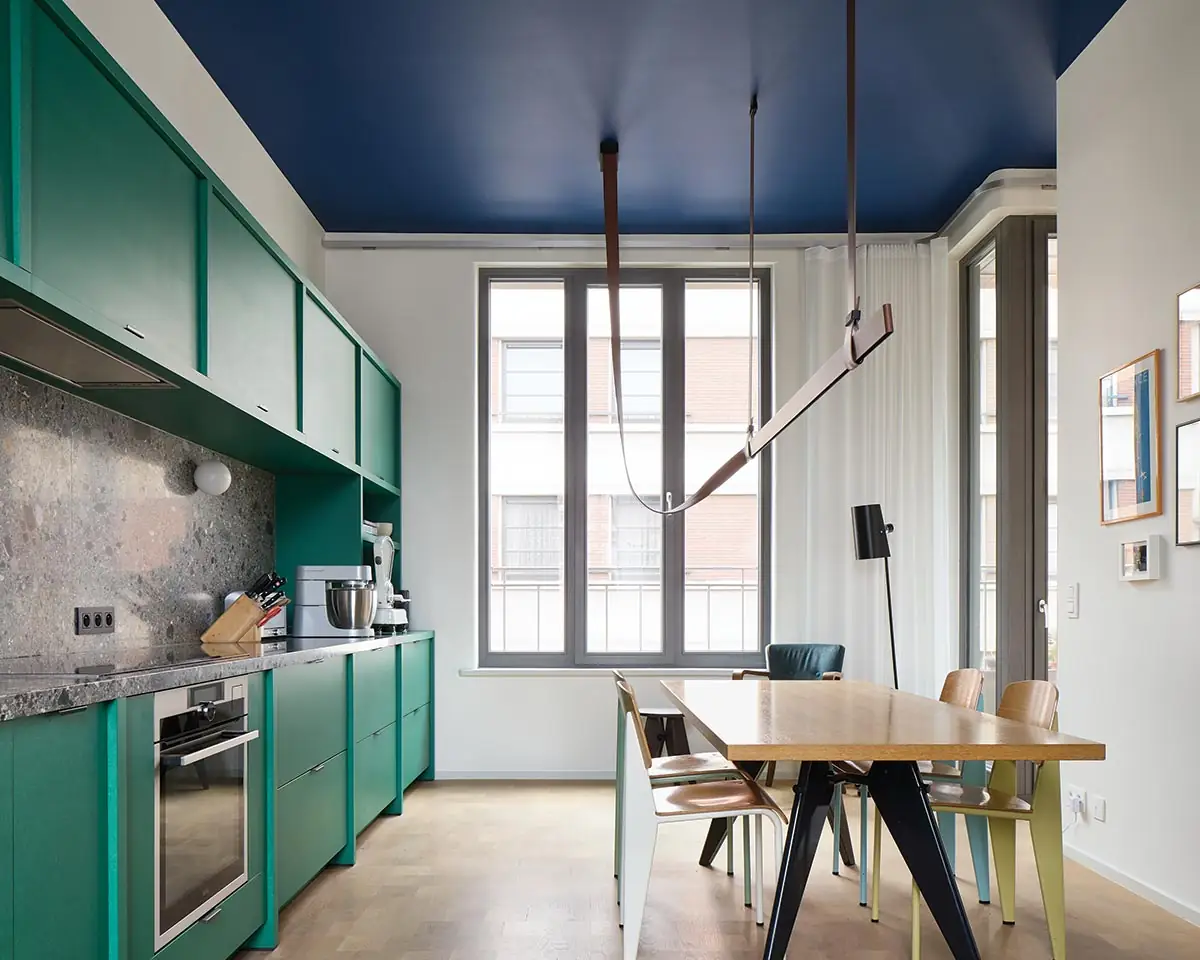
1
Bursts of color enliven the kitchen (1), oval staircase (2), and the primary bathroom (3). Photos © David De Bruijn
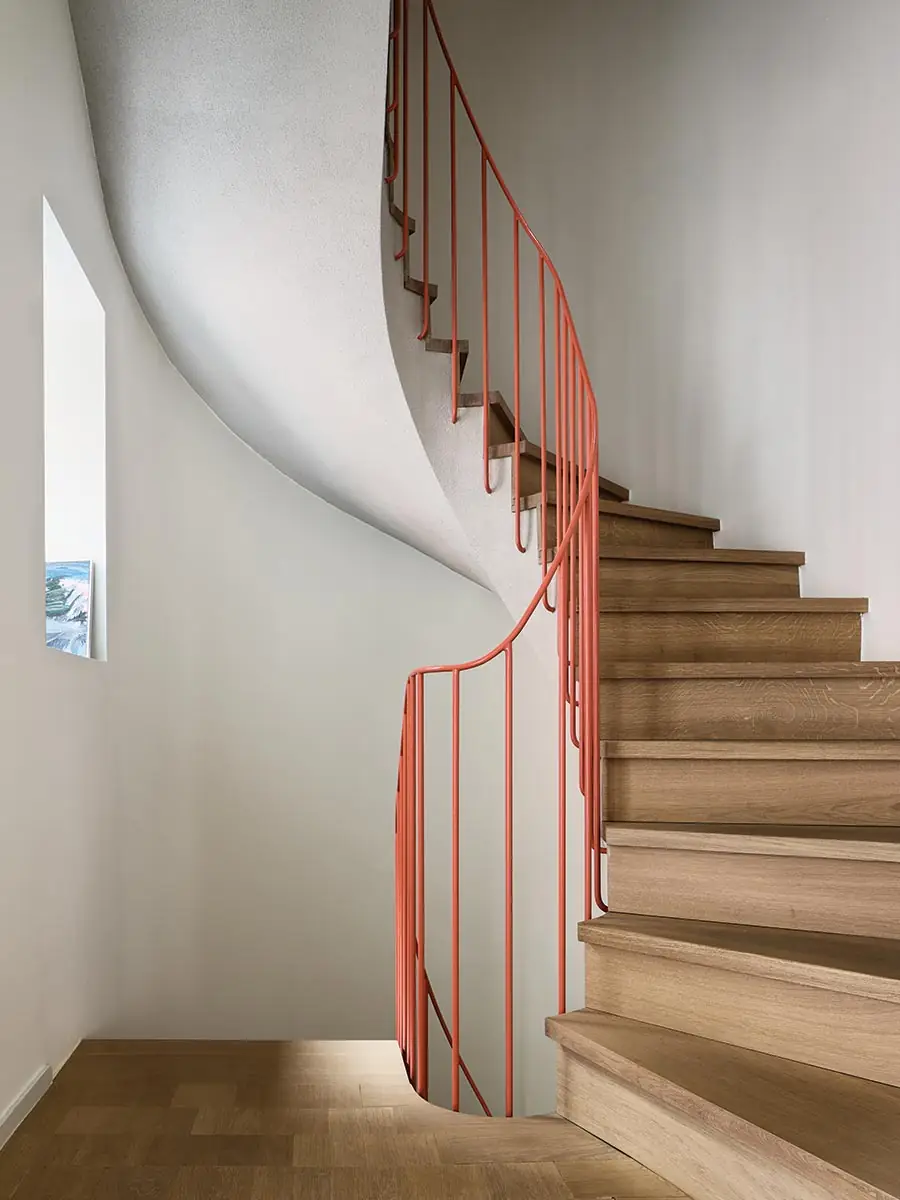
2
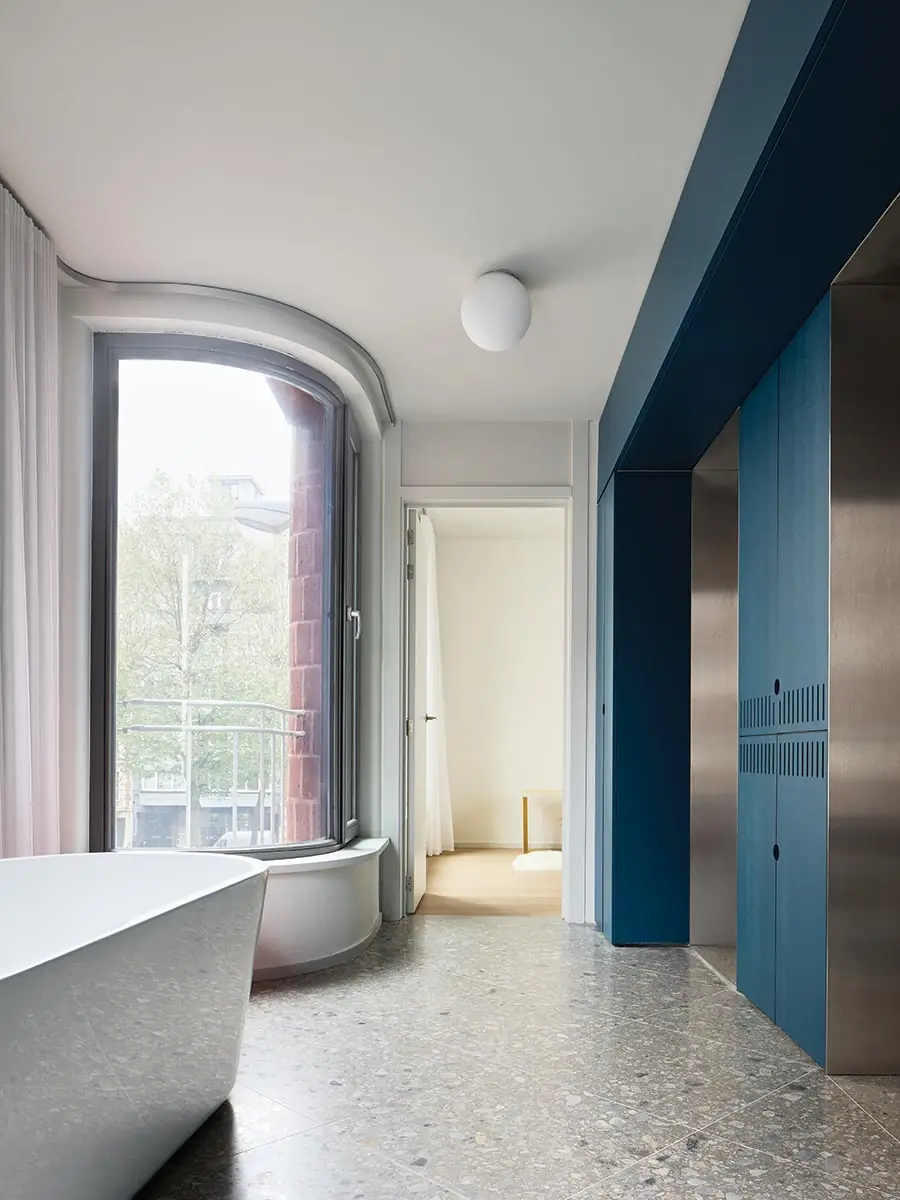
3
Yet the building, in plan, is clear and symmetrical, with a strong central entrance. A guest room and garage are placed on the ground floor; above this are two children’s rooms and a shared playroom. The parents have their own floor, with bedroom, private bathroom, and study. The uppermost floor contains a kitchen, living room, and the balcony, but a furnished terrace with a half-bath makes the roof level usable as well.
Both the plot and the building code indicated that the best location for the staircase was to the east, rather than at the center, so a curved corridor on the ground floor leading to the oval circulation tower became necessary. This curvature reconciles the symmetry of the building with the more utilitarian needs of the staircase, enabling the old and the modern to coexist and, hence, becoming a unifying design feature.
This consistency of geometry in the detailing helps make Werfstraat a convincing, clever blend of contemporary and classical principles. It is an intensely urban house too, one that addresses the street with brio and confidence but, on a shallow site, also offers seclusion and privacy.
Click plans to enlarge
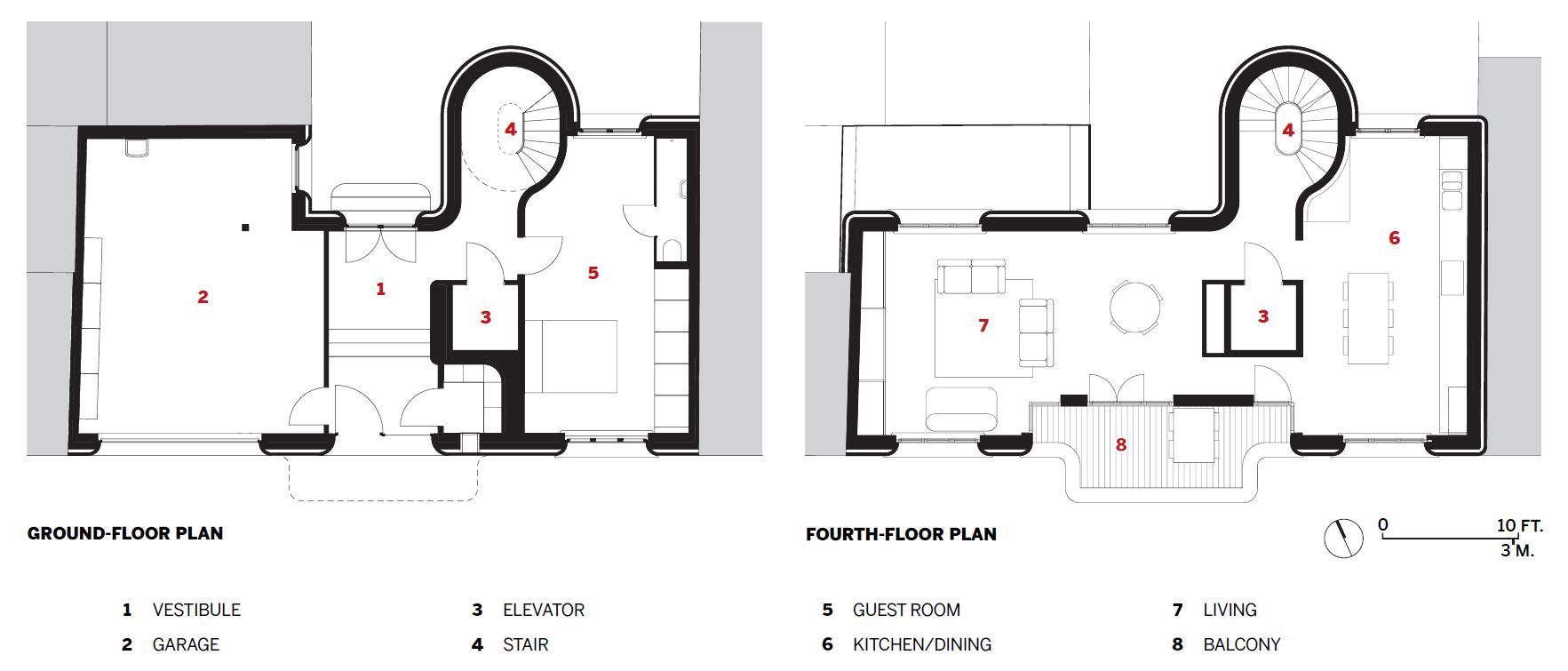
Credits
Architect:
Bovenbouw Architectuur — Dirk Somers, principal; Nicolas De Paepe, Sander Laureys, Carole Boeckx, Marius Grootveld, design team
Engineers:
Chalybs (structural)
Raco (m/e/p)
General contractor:
OneBuild
Size:
5,220 square feet
Cost:
$943,000 (construction)
Completion Date:
November 2020
Specifications
Exterior Cladding:
Cladding unique to this project: St. Joris
Windows:
Metal frame: Van Hirtum
Glazing:
Glass: Van Hirtum
Interior Finishes:
Cabinetwork and custom woodwork: Atelier Ternier
Wall coverings: Tollenberg
Carpet: Van Looveren
Furnishings:
Other: Atelier Ternier
Energy:
Energy management or building automation system: Bonnet Electric



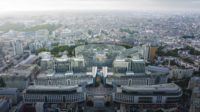
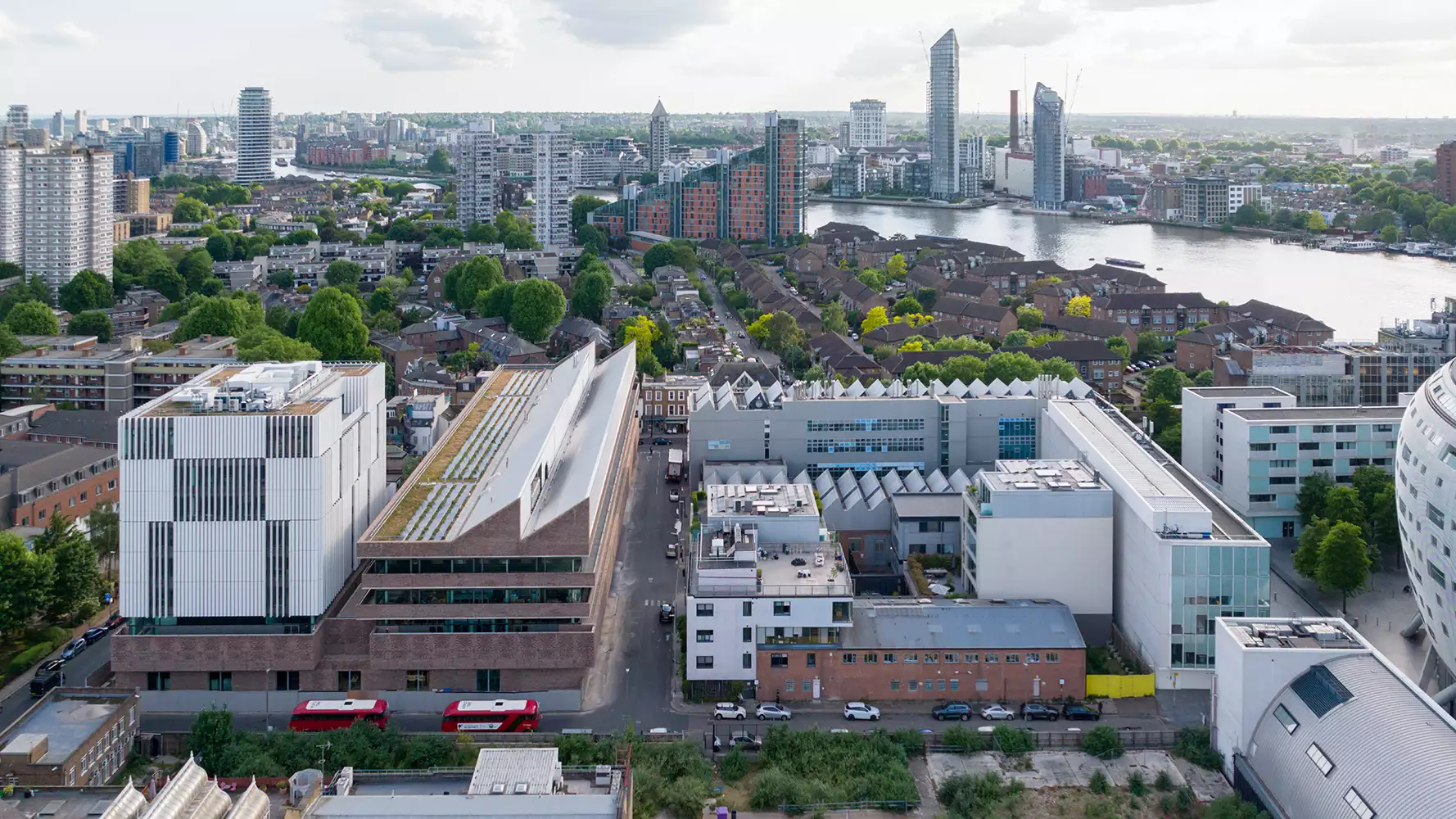
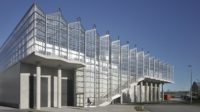
Post a comment to this article
Report Abusive Comment